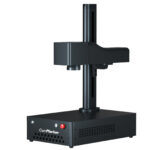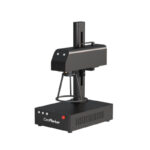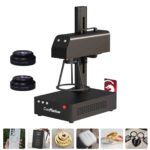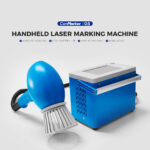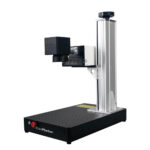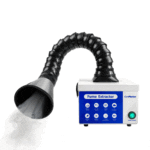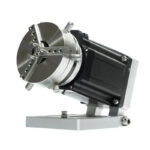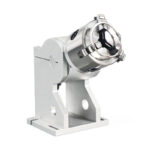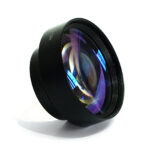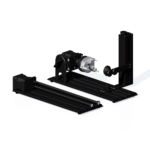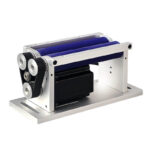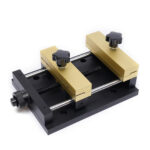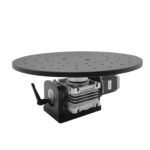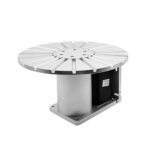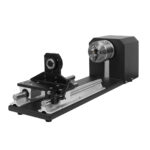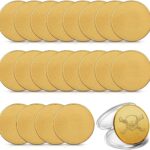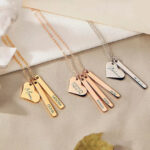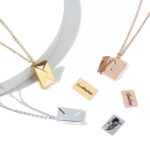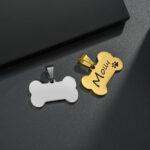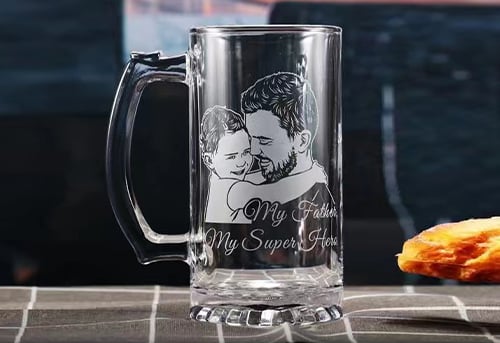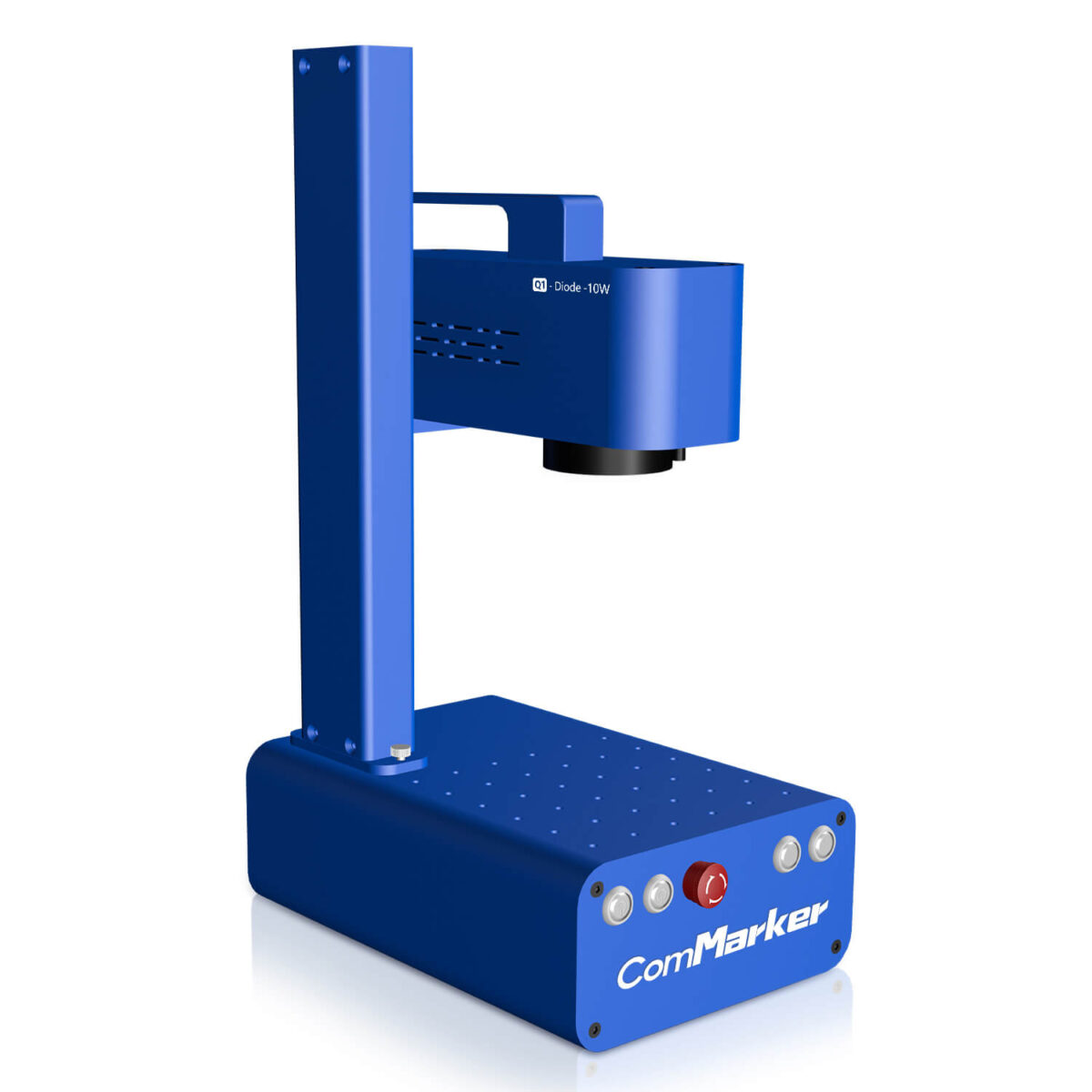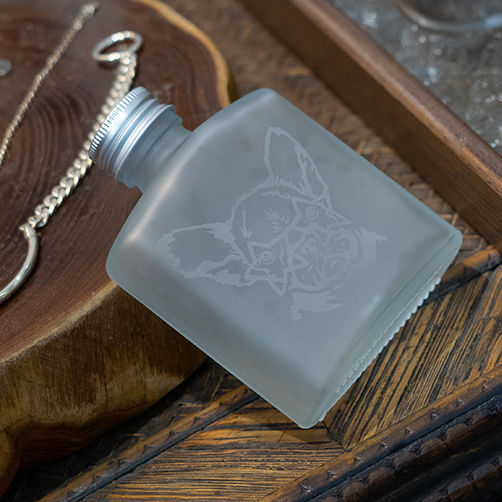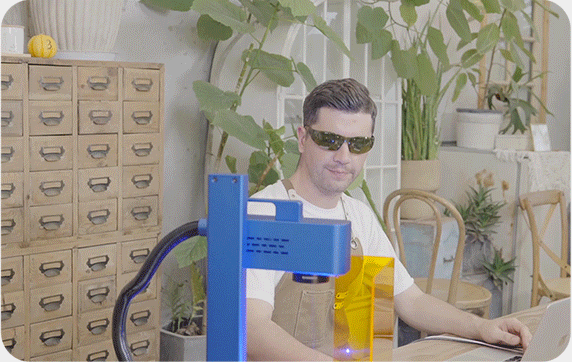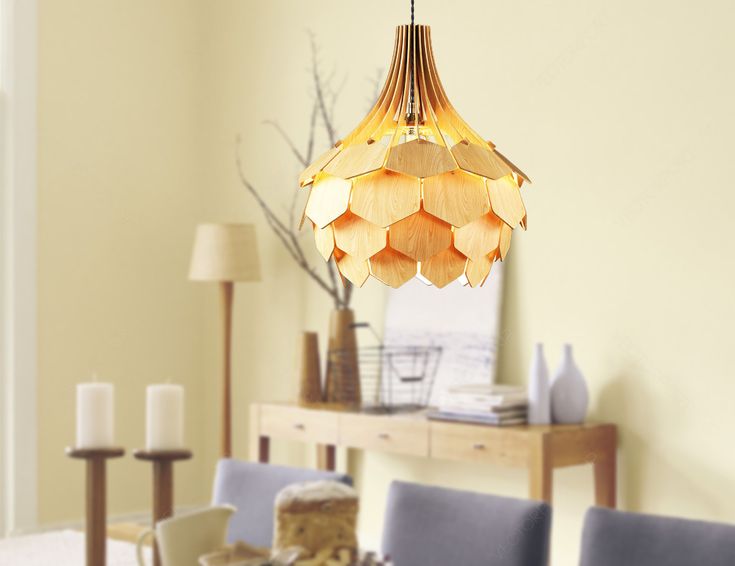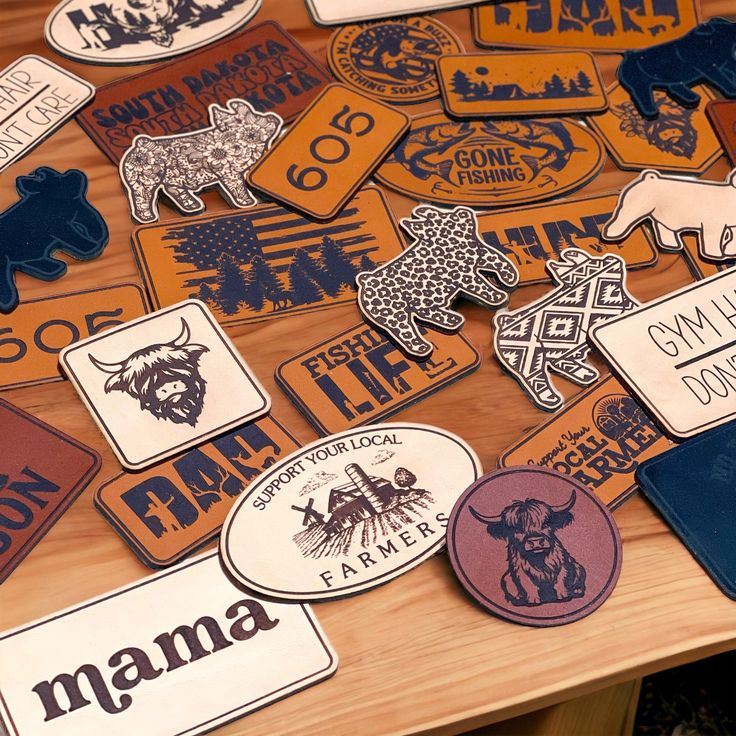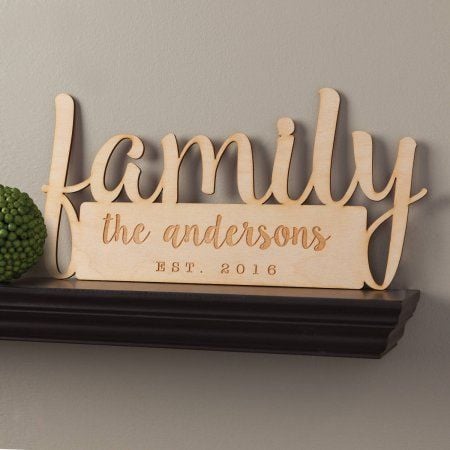The mesmerizing capabilities of laser engraving technology have indeed long been evident, doing wonders for a host of materials, but do you think the potent force of this high-power laser beam can exert a similar charm to delicate substrates like glass?
Well, the good news is that diode laser systems, with their precise control and focused energy, make it possible to mark stunning patterns, intricate details, and accurate text onto glass surfaces with unparalleled accuracy.
However, Diode lasers need an extra step to engrave glass efficiently. Since their wavelength isn’t easily absorbed by glass, a colored paper is applied beforehand. This paper absorbs the laser’s energy, aiding in precise engraving on the glass surface.
In this guide, we’ll run through the step-by-step processes of how to harness this remarkable diode laser technology to engrave glass with refinement and clarity.
Table of Contents
Introduction: The Magic of Glass Engraving & The Technological Advancement of Diode Laser
Glass engravings have been quite the trend for centuries, showing off art in a way that’s just timeless. But as laser engraving technology has been introduced, things have taken a turn lately, transforming everything wherever you look. Especially, the diode laser systems are the real game changers here, and they totally shook up the way glass engraving is being done, adding a whole new level of intricacy to the engraving processes.
Gone are the days of laborious hand-engraving techniques; today, diode laser systems unlock many creative doors of possibilities by harnessing the focused beam of light wavelength, allowing for intricate patterns, delicate lettering, or elaborate motifs on glass surfaces with ease.
Not just that, but the versatility of diode machines allows you to engrave on various glass materials while also offering 4000mm/s faster speed and 0.05mm efficient accuracy, significantly reducing production time and yielding quality output.
Thus, this user-friendly, easy-to-setup and technologically advanced laser system enables professionalists and hobbyists to create personalized designs with ultimate perfection. This technological leap now makes it way easier to get into glass engraving, and you can make those designs super precise. It’s like a new world for glass artisans, making their craft a whole lot more accessible and fun.
Q1 Diode Laser Engraver
康马克 Q1 真正的工业级 10W 二极管振镜激光雕刻机 便携且价格实惠 工业级应用: Q1 二极管激光雕刻机 VS CO2 激光机 Q1 振镜二极管激光器重量仅为 5.0 千克 (11bs),是便携性和便利性的典范,可轻松 与 CO2 激光机相比,它适用于多种应用,您可以雕刻
Understanding the Mechanics of Diode Laser Technology
The diode laser engraver is a high-precision engraving machine that fundamentally works on the principle of a focused laser beam built around a semiconductor. A super-concentrated light beam is generated when the electricity is passed through this semiconductor.
Multiple diodes are combined to achieve a much more powerful laser beam so that it can work its thing on delicate material like glass for required patterns and designs.
They act just like your regular LEDs, but they’re supercharged. The appreciative feature is that instead of blasting out heat everywhere like those regular lasers, diode lasers keep their beams aligned and straight, pinpointing exactly where they need to engrave without spreading too much around.
Coming to its suitability for glass engravings, its low-heat impact makes it a worthy choice for all glass types, from delicate crystals to sturdy borosilicate. That means you can get super intricate designs without worrying about damaging the glass or causing any unsightly cracks or chips.
So, what’s more interesting is that there’s a low chance of glass breaking or scratching; thus, artisans can level up their creative efforts by bringing up personalized glassware, branding gifts, or wedding crafts.
With that said, there’s another impressive feature of diode laser: its unparalleled ease of use. With user-friendly software interfaces and intuitive controls, even intricate designs can be effortlessly translated onto glass surfaces with minimal setup time and hassle.
In essence, the magic of glass engraving is revitalized by the technological advancement of a diode laser engraver. Thus, the precision, versatility, and ease of use have transformed the art form in glass, empowering enthusiasts to unleash their creativity with even the tiniest details with pinpoint accuracy.
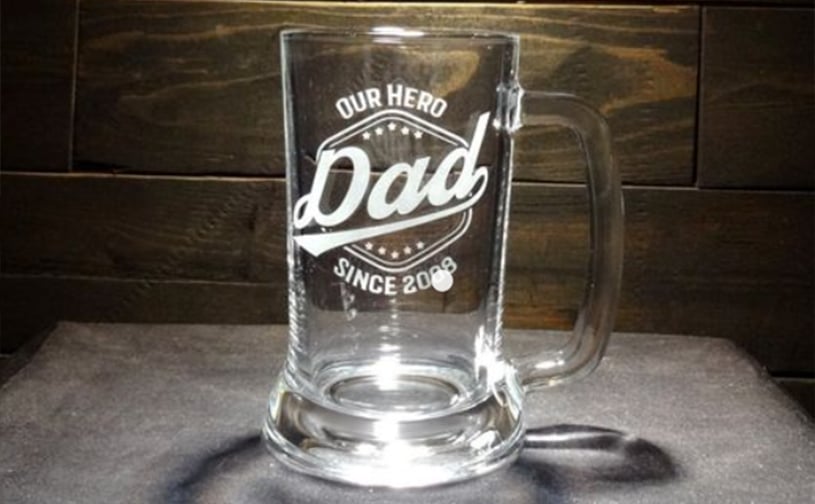
Preparing for Your Glass Engraving Project
Choosing the Right Glass
When it comes to picking the perfect glass for engraving, a few things can make a big difference. First off, consider the thickness. Thinner glass is usually easier to engrave because the diode laser can penetrate it more effectively, giving you cleaner lines and details.
Next up, think about colour. Glass with a clear surface is the obvious choice for most engraving projects since it shows off the design really well, but coloured glass can add a unique touch if that’s what you’re going for.
Finally, pay attention to the composition of the glass. Some types, like borosilicate glass, are more resistant to heat and might be better suited for certain engraving techniques. Ultimately, it’s all about finding the right balance of thickness, color, and composition to make your engraving pop.
Here’s a brief overview of the types of glass surfaces, along with their feature descriptions.
| Glass Types | Usage | Engraving Feature |
| Borosilicate Glass | Borosilicate glass is often used to manufacture bottles, flasks, funnels, beakers, and measuring instruments. | Due to the composition of borosilicate glass, it’s a great choice for engraving because it doesn’t freak out as much when things heat up or cool down in a hurry. That’s because it has this low coefficient of thermal expansion, which means it’s less likely to crack under pressure from rapid temperature changes. As a result, borosilicate glass tends to be more forgiving when laser engraved – creating a cleaner, crisper and less flakey finish. |
| Soda-lime Glass | Soda-lime Glass is the most common form, making up approximately 90% of all manufactured Glass. Produced on a large scale and used for bottles, drinking glasses, and windows | Soda-lime Glass has a low melting temperature, making it an ideal choice for laser marking and producing minimal chipping and flaking. The higher the quality of soda lime glass, the better the engraving quality. |
| Lead Crystal Glass | Lead crystal is a popular material for crafting chandeliers and lighting fixtures. Moreover, it also found its application in jewelery, giftware or decorative pieces. | Lead crystal glass tends to be more temperamental to engrave. Glass with high levels of lead tends to produce more heat during the engraving process, which can lead to excessive chipping, flaking, and even breaking. |
Here are some points to note down: Most types of glass are a breeze to work with when it comes to laser engraving. But those fancy glasses with a higher lead content? Yeah, they can be a headache. Turns out, the lead in the glass expands faster than the glass itself when hit with the laser, causing some faulty marking issues.
Plus, the diode laser tends to skip over those lead parts, which can lead to cracks or even breakage. So, if you’re diving into glass engraving, stick with unleaded glass to avoid any damage.
Also, When etching glass with a diode, it’s essential to use coloured paper and transfer the design onto the glass through heat transfer. This method ensures a stable and consistent etching effect, as direct etching is simply not feasible.
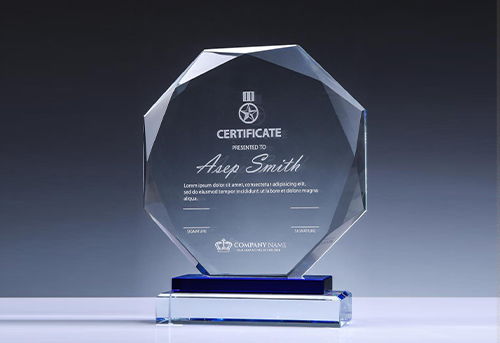
Designing Your Engraving
Leveraging Software
Letting your creativity get its realistic image, all it comes down to is leveraging the software for all the preparation and designing work for the diode laser engraver. When using our 10W diode system, Lightburn software is your only reach.
This user-friendly software is packed with powerful features that make all your design and artwork a breeze. Whether you’re going all-out with intricate designs or keeping it simple with basic shapes, you’ve got the freedom to design just the way you want, with all the precision and flexibility you need.
And here’s the best part – LightBurn plays nice with all sorts of file formats. So, if you’ve already got some artwork you love in another program, no worries! You can bring it right into LightBurn without any hassle.
Also, With options like optimization and advanced settings control, you can adjust your designs until they’re just right for that perfect finish.
But wait, there’s more! With real-time previewing, you can see how your design will look. It’s like having a sneak peek at the finished product so you can make any last-minute changes before you hit the start button. How’s that for peace of mind?
Design Tips for Glass Engraving Using Diode Laser
The glass surface can be the best canvas for unleashing your creativity through engraving, but a few simple design tips can get your work to the next level and make it truly shine. Here’re some pointers to get masterpieces.
Keep It Simple: Embrace the elegance of glass and work your artistry by opting for simple, uncomplicated designs. By that, we mean minimalistic shapes, clean lines, and bold graphics that can make your creation pop up, allowing the beauty of the material to shine through.
Consider Contrast: When it comes to designing for glass, contrast is your best friend. Go for colours and patterns that stand out against the glass background, like Dark on Light and Light on Dark–you get the idea. Bold contrast can literally add depth and visual interest to the product.
Balance Detail and Space: Don’t be afraid of adding intricate details to your engravings, but let them not be overcrowded. Simply allow some spaces for engraving to breathe, as balanced detail with open spaces creates a harmonious look.
Remember Transparency: When you’re designing glass, keep in mind that glass is see-through, so preferably, more solid colors and bold shapes work fine; otherwise, intricate shapes would get lost somewhere.
Think About Reflections: Glass reflects light, so make the most of it in your best interest. Work your way up, incorporating shiny elements into your design to get all the sparkle right there.
Durability: If your design is going on something that’ll get a lot of use, like a glass or a decorative piece, think about durability. Choose materials or techniques that can handle a little wear and tear without fading or scratching. For instance, Take borosilicate glass as your base material because it’s super strong and resistant to thermal shock, so no more worrying about frequent handling or temperature changes. You can even go for sandblasting or applying a protective coating post-engraving to ensure longevity.
Harmonize with the Shapes: Glass surfaces can often be curved or cylindrical; therefore, pay attention to the natural contours of the glass so more seamless and harmonious designs can be achieved, the ones that align with the object’s shape.
Personalize with Purpose: If you’re creating a custom piece, take a moment to think about the person who’ll be receiving it and tailor your design to reflect their personality, their interests, or the occasion you’re celebrating. Adding a bit of personal flair can be a source of emotional connection that makes the gift truly special, whether it’s a monogram, heartfelt sentiments, or words of encouragement.
Engraving Process and Techniques
Optimizing Laser Settings
Glass engravings with a diode laser produce such a beautiful frosted effect, allowing you to engrave custom logos and designs on nearly any type of glassware. However, some careful considerations are essential in the laser settings, such as power, speed, and focus, for optimal results and clarity.
Power:
The power of the laser beam determines the intensity of the engraving. It always goes after a simple rule: higher power for deeper engraving results, and low power goes well for delicate markings and designs.
So, depending on the engraving depth requirement, speed, and thickness of the glass in hand, the power levels of diode laser engravers for common applications range between 10W and 40W. A 10W-20W diode laser is sufficient for clear surface marking on glass.
However, if you want to go for deeper marks, as with texts or logo embossing, diode lasers with power levels between 20 and 30 watts are often used while keeping control over the process.
Still, if your work requirement demands deeper marking, producing an effect of 3D or intricate detailing, higher power diode lasers in the range of 30 watts to 40 watts or more may be necessary.
Speed:
This parameter indicates the laser beam’s movement across the material’s surface in a given time. More obviously, faster speed leads to lighter engravings, and slower ones are good for thoughtful markings. Speeds in the range of 10 to 100 millimeters per second are common for deep engraving results on glass.
However, for large-scale production or simple designs where speed is prioritized over intricate detail, zooming through at higher speeds is a great idea to get the job done fast.
Though higher speed enhances productivity and throughput, there’s a trade-off – you might end up with lighter engravings or not-so-deep cuts. Once you start hitting speeds over 500 millimeters per second, you’re in the realm of high-speed engraving.
Focus:
Once you set the speed and power of the diode laser engravers, it becomes an essential requirement to adjust the laser beam’s focus. Why? Because that’s how you get those crisp, consistent engraving depths. It’s just like managing to create a spotlight so that the laser beam hits the glass surface with maximum intensity.
It’s pretty evident that glass surfaces aren’t always flat and uniform; most of the time, it’s either thick or curvy. So, by tweaking that focus just right, you’re adjusting for all those twists and turns in the glass, making sure your engraving game stays on point.
If you’re gearing up for some glass engraving action with your diode laser, consider opting for a lens with a shorter focal length to ensure optimal performance and versatility across a range of glass surfaces.
The Role of Pre-Treatment of Glass Surfaces
When the laser beam hits the glass surface, glass molecules scatter, and things start heating up really quickly. Especially for high-quality glass that lacks a set melting point, overheating causes it to disperse uncontrollably, damaging the glass engraving effects. To keep your glass from cracking under pressure, it needs a little care before the laser gets to work.
Use a wet paper towel or newspaper and put it on the glass surface to create a protective barrier. It spreads water content over the area during glass engraving. The liquid disperses the beams and cools the heated zones through evaporation. However, it should be laid flat without air bubbles, or poor results will occur there.
And don’t forget to put colored paper while you do your engraving with our diode laser. Why? Because this will let you achieve impressive engraving results and it’s actually feasible to do.
Monitoring and Adjustments
The laser engraving process is quite technical; therefore, keeping a visual inspection of the engraving as it progresses is always advised. Look for any signs of incompleteness, uneven engravings, or excessive heat buildup to spot an issue early on, and take action before they escalate.
And while you’re doing your experiments with the laser, make sure to keep an eye on a few key things: temperature, power, speed, and focus. If something seems off, don’t hesitate to make some adjustments thereby.
Here’s what you should do–think about setting up a system that gives you real-time feedback like how deep your engraving is or how good the quality is. That way, you’re not just guessing – you’ve got hard data to help you make the right fine-tuning. It’s like having a trusty metric to keep you on track while you work your magic with the diode laser.
And let’s not forget–before diving into the final piece, run a test engraving on a similar piece of glass. This allows you to fine-tune your settings and make any necessary adjustments before committing to the engraving. Know that experimenting with minor adjustments can assist you in finding the sweet spot that delivers the desired results.
Innovative Applications and Ideas
Glass engraving offers tremendous creativity options, empowering operators to infuse unique charm and elegance into the products, whether it’s home decor, personalized gifts, or it’s about elevating promotional branding. Here are a few suggestions for innovative projects within these domains.
Home Decor
- Customized Vases: They’re an exceptional opportunity to blend functionality with artistic expression, proving these engraved vases a standout piece of art in any home decor scheme. Whether you wish to engrave geometric patterns, floral motifs, or abstract designs onto the surface of the material, our diode laser engraving machine can create stunning centerpieces for your table or shelves.
- Mirror Designs: With the precision of our diode laser engraver, your simple-looking mirrors can be transformed into captivating pieces of attention by embellishing them with any design– an image, special words, and dates, or even a delicate floral border– and personalizing it as you like. It not only amplifies the elegance of the mirror but also infuses it with a distinct and individualized charm. Whether you’re all about decorating a wall, putting it as home decor, or serving it as a thoughtful gift, it becomes your reflection of your unique style and taste.
- Window Art: Are you looking for ways to get rid of the dull theme of your living space? Our laser engraving machine can infuse enchanting charm into the space through the delicate precision of glass engraving. Plain windows and raw mirrors can be transformed into captivating works of art by adding scenic landscapes or stained glass patterns, each pane a canvas for expressing beauty and imagination.
Personalized Gifts
- Glassware: Can you imagine your everyday drinkware can turn into an exquisite piece of functional art? Yes, glass laser engraving has the ability to enhance both product appeal and practicality by imposing monograms, logos, and heartfelt messages onto wine glasses, tumblers, or champagne flutes for memorable gifts.
- Photo frames: Create a one-of-a-kind photo frame and let your creativity applaud using our diode lasers to engrave family portraits, special dates, and customized symbols. Adding these really sets the gift for weddings, anniversaries, retirements, or any other special occasion. We also can engrave photos of your favourite family vacation or pet—the list is endless.
- Keepsakes Boxes: Through the artistry of glass engraving technology, customized keepsake boxes serve as repositories for treasured memories, serving as a unique and tangible way of safeguarding and cherishing life’s most precious moments. Wouldn’t it be an exquisite heirloom that captures the essence of love, celebration, and remembrance?
Professional Branding
- Logo Displays: Do you wish your brand logo to shine bright on a glass plaque or adorn an elegant award? Obviously, it’s a symbol of your brand identity and value more than just a logo. So, if it’s for a corporate event or simply sprucing up your office decor, engraving your logo onto glass will be like giving your brand a VIP pass to the spotlight, ensuring it stands out and leaves a lasting impression on clients, partners, and employees alike. So, why settle for ordinary when you can elevate your brand with a touch of glass engraving magic?
- Business Cards: Have you heard of glass business cards? Oh yes, it’s another sophisticated business idea that makes a memorable statement about your brand. With laser engraving, your contact details, logo, or even a stylish design can be marked onto transparent glass, making for a conversation starter like no other.
- Product Packaging: If you’re really searching for innovative ways to make your products stand out on shelves, one great idea is to go with product packaging with engraved glass elements on it. Think about it – when customers see your product nestled in a sleek glass container with laser-engraved details, they’re not just buying something; they’re buying an experience. And just be real, who wouldn’t want to keep a uniquely craved glass jar or bottle once they’ve used up the contents?
Embarking on glass engraving projects isn’t just limited to what has been mentioned. There are countless ways to go unique and showcase the artistry using the latest laser technology. No matter whether you’re a beginner or a professional engraver, we urge readers to showcase your projects, share your experiences, and connect with like-minded individuals.
Share photos of your glass engraving creations on our social media page or use the hashtag #GlassengravingCommunity.
Conclusion
So, if you’ve got a glass item and you’re looking for ways to add a personal touch to it, you should immediately get your hands on our laser engraver. You’ll see them pouring the magic of customization for your glass.
Seriously, these machines are a game-changer, making it a breeze to add your own flair to any piece.
And hey, whether you’re a total newbie or a seasoned engraving pro, we’ve got your back at ComMarker. Our galvo diode laser are top-notch, and we’re not just about selling you a machine—we’re here to support you every step of the way. From quality equipment to expert guidance and a whole lot of inspiration, we’ve got everything you need to make your engraving dreams a reality. So, let’s get creative and make some creativity happen!

